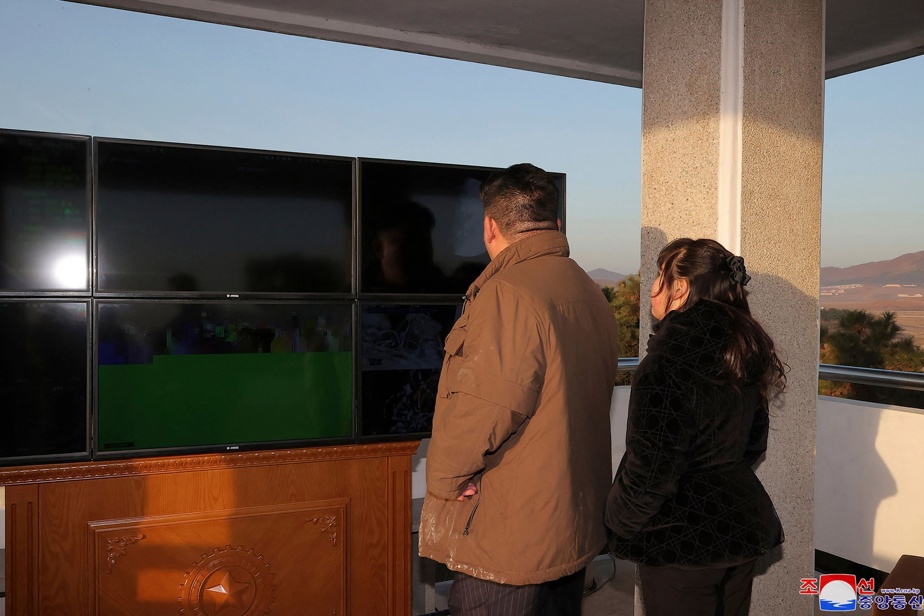(Seoul) North Korea confirmed on Friday that it had launched an intercontinental ballistic missile (ICBM) the day before, the second this year, a test personally supervised by leader Kim Jong-un and his daughter.
The missile launched Thursday towards the Sea of Japan was a Hwasong-17, the official KCNA news agency said, adding that the launch was a response to “frenzied” US-South Korean military exercises.
Photos published by the official Rodong Sinmun daily show Kim Jong-un using binoculars and watching the black and white projectile shoot into the sky.

PHOTO AGENCY KCNA/AGENCE FRANCE-PRESSE
Kim Jong-un watching the launch
The footage also shows Mr Kim alongside his daughter — never named by state media, but identified as his second child Ju Ae by South Korean intelligence — examining photographs showing the land from space, allegedly taken by a camera mounted on the missile.
The firing “confirms the war readiness of the ICBM unit”, KCNA said, adding that the launch “has no negative impact on the security of neighboring countries”.
The South Korean military had earlier said the missile followed a lobbed trajectory, typically chosen to avoid flying over other countries.
At Thursday’s launch, Kim said the North will “react to nuclear weapons with nuclear weapons,” and called for “irreversibly strengthening nuclear deterrence,” according to KCNA.
“Face any war”
The country’s top leader also praised the North’s “rapid reaction capability […] to face any armed conflict and any war”.
North Korea declared itself an “irreversible” nuclear power last year, and Mr Kim recently called for an “exponential” increase in the production of weapons, including tactical nuclear weapons.
Dubbed the “monster missile” by military analysts, the Hwasong-17 theoretically has enough range to reach the mainland United States.
With this latest launch, North Korea is trying to underline the advancement of its armaments, analysts say. “With the pictures of the earth, Pyongyang seems to want to show that it can precisely hit any target the regime wants with its ICBM,” Cheong Seong-chang of the Sejong Institute told AFP.
According to him, the next step could be the firing of a missile “at a normal angle”, to demonstrate its ability to survive re-entry into the atmosphere.
The ICBM firing, preceded by several other missile launches since Sunday, came on the day of a visit to Japan by South Korean President Yoon Suk Yeol, and as Seoul and Washington are currently holding their largest joint military drills. in five years.
Called “Freedom Shield”, these exercises began on Monday and are to last ten days. They focus on “the changing security environment” due to the redoubled aggressiveness of North Korea, the allies said.
North Korea regards these maneuvers as rehearsals for an invasion of its territory or an overthrow of its regime.
“The fact that North Korea has almost normalized intercontinental ballistic missile testing over the past year is concerning,” Joseph Dempsey, a researcher at the International Institute for Strategic Studies, told AFP.
For Soo Kim, a former CIA analyst for Korea, Kim Jong-un’s regime “has essentially desensitized the international community to its weapons tests”.
“We have reached a point where an intercontinental ballistic missile test does not attract more attention than a short-range missile test,” she said. “We will continue to see North Korea progress and expand its range of weapons capabilities in the days ahead. »
